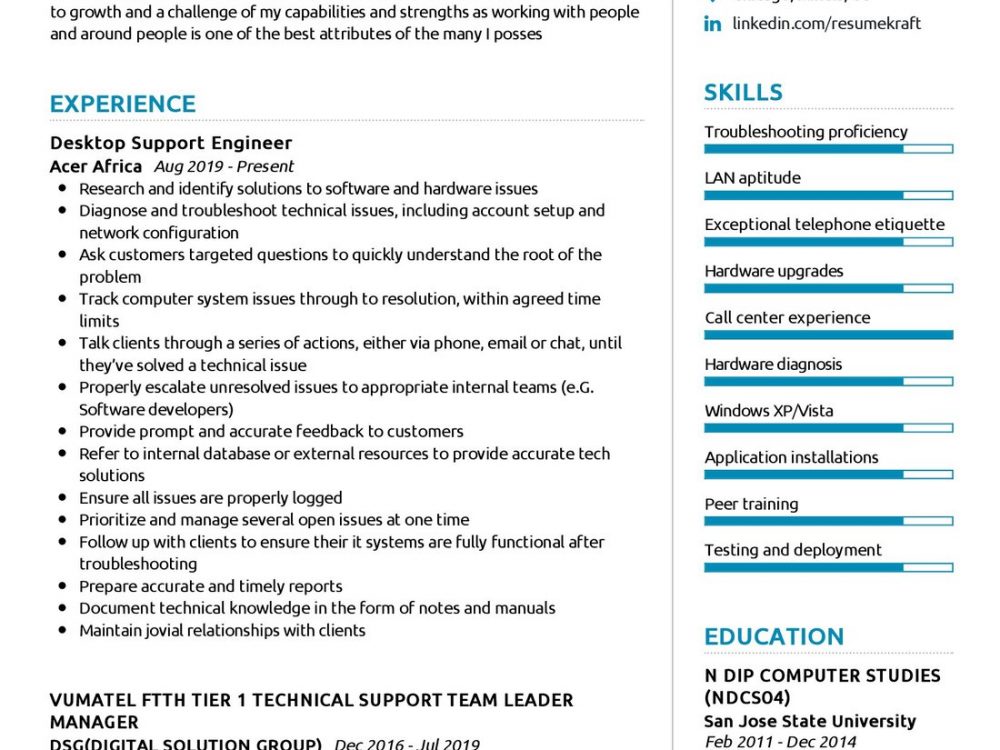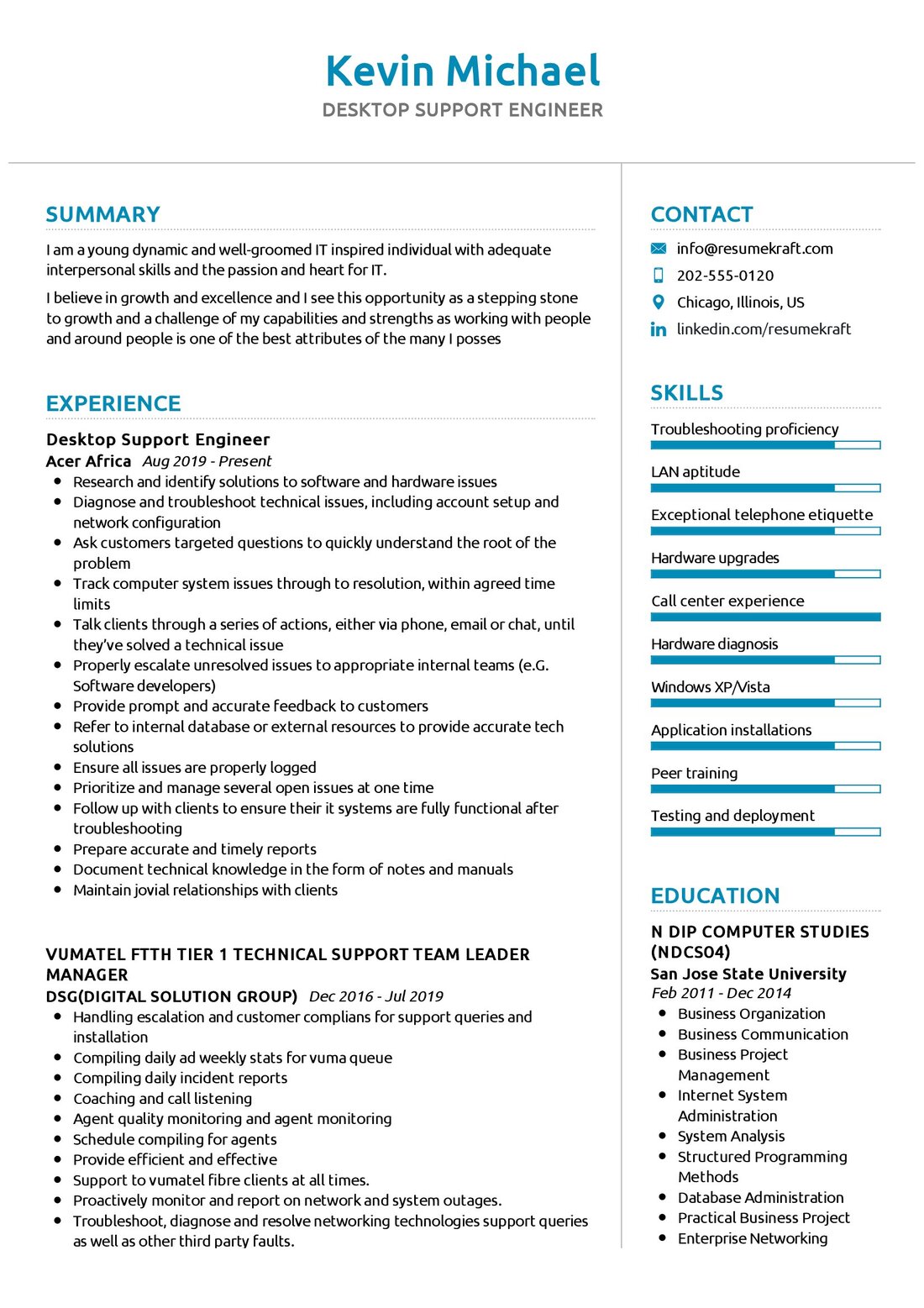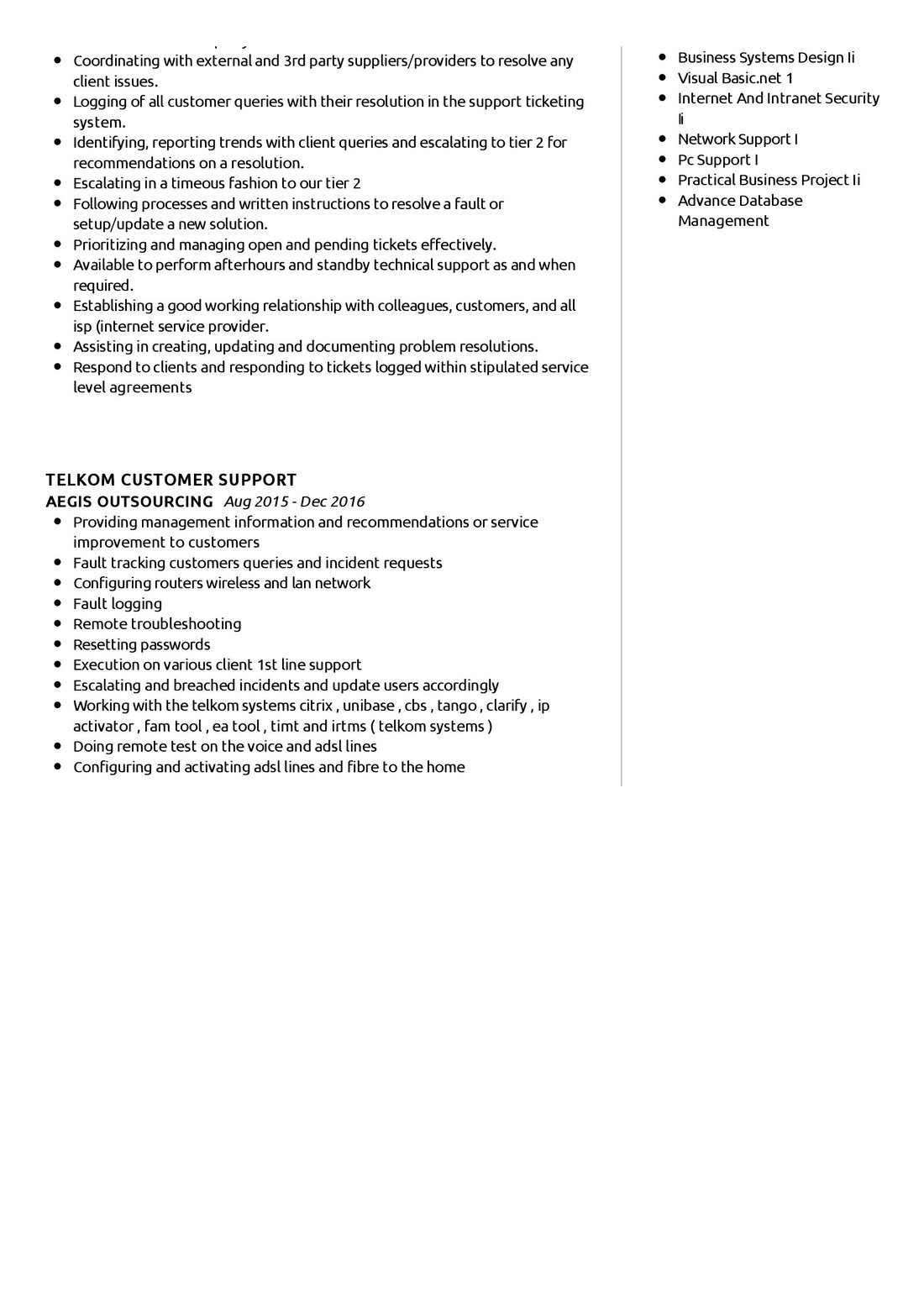What is the Role of a Desktop Support Engineer?
In the dynamic world of IT, a Desktop Support Engineer plays a critical role in ensuring the smooth operation of computer systems and networks within an organization. This role is the backbone of the IT department, providing vital support and solutions to both individual users and teams.
A Desktop Support Engineer is responsible for installing, maintaining, and troubleshooting hardware and software to ensure optimal workstation performance. They are the go-to professionals when it comes to resolving technical issues, offering support through various channels such as email, phone, or in-person. Their role extends to educating users on how to utilize different software and hardware optimally, fostering a productive work environment. Let’s delve deeper into the nuances of this role, exploring the diverse responsibilities and skills that define a Desktop Support Engineer.
What are the Desktop Support Engineer Job Requirements?
Embarking on a career as a Desktop Support Engineer necessitates a robust foundation in IT coupled with a knack for problem-solving. The job requirements are a blend of educational qualifications and hands-on experience. Here we outline the typical prerequisites for stepping into this role:
- A Bachelor’s degree in Computer Science, Information Technology, or a related field, laying the groundwork for a career in IT.
- Relevant certifications such as Microsoft Certified: Windows 10, CompTIA IT Fundamentals (ITF+), or Cisco Certified Technician (CCT) can be a testament to your technical prowess.
- Experience in troubleshooting and maintaining various operating systems and desktop environments.
- Proficiency in working with different types of computer hardware, peripherals, and software applications.
- Strong communication skills to effectively interact with users and understand their issues.
- A proactive approach to identifying potential problems and implementing preventive measures.
Building a portfolio that showcases your experience in handling real-time issues can be a great way to stand out in the competitive job market.
What are the Responsibilities of a Desktop Support Engineer?
The role of a Desktop Support Engineer is multifaceted, encompassing a wide range of responsibilities that ensure the seamless functioning of IT systems. Let’s explore the core responsibilities that define this role:
- Installing and configuring hardware and software components to ensure usability.
- Troubleshooting hardware and software issues promptly to minimize downtime.
- Performing tests and evaluations on new software and hardware.
- Providing support to users and being the first point of contact for error reporting.
- Establishing good relationships with all departments and colleagues.
- Managing technical documentation and service reports.
- Upholding the company’s privacy policy and ensuring data protection.
Being adept at multitasking and maintaining a calm demeanor in high-pressure situations are traits that will hold you in good stead in this role.
Desktop Support Engineer Resume Writing Tips
Creating a resume that effectively showcases your skills and experiences as a Desktop Support Engineer can be your ticket to landing that dream job. Here are some tips to craft a resume that stands out:
- Highlight your technical skills prominently, showcasing your proficiency in handling various hardware and software systems.
- Detail your experience in troubleshooting and problem-solving, providing examples of how you have effectively resolved issues in the past.
- Include any relevant certifications that attest to your technical knowledge and expertise.
- Don’t forget to mention your soft skills such as communication and teamwork, which are vital in a support role.
- Use keywords from the job description to tailor your resume for the specific role you are applying for.
Remember to keep your resume updated with any new skills or experiences to ensure it accurately reflects your capabilities.
Desktop Support Engineer Resume Summary Examples
Your resume summary is a concise snapshot of your professional journey, highlighting your key skills and experiences. Here are some examples to inspire you:
- “Experienced Desktop Support Engineer with over 5 years of experience in providing exceptional user support, proficient in a wide range of technologies.”
- “Detail-oriented Desktop Support Engineer with a track record of resolving complex issues, enhancing system performance, and ensuring user satisfaction.”
- “Proactive Desktop Support Engineer with a deep understanding of hardware and software troubleshooting, committed to maintaining cutting-edge technical skills.”
Each summary should be tailored to showcase the unique skills and experiences you bring to the table.
Create a Strong Experience Section for Your Desktop Support Engineer Resume
The experience section is where you get to showcase your journey in the IT world. Here, you can detail the roles you have undertaken and the impact you have made in those roles. Let’s look at how you can craft a compelling experience section:
Remember to quantify your achievements, providing a clear picture of the value you can bring to a potential employer.
Sample Education Section for Your Desktop Support Engineer Resume
Your educational background forms the foundation of your career. In this section, highlight your academic achievements and any additional courses or certifications that have equipped you with the necessary skills. Here is a sample:
- Bachelor of Science in Computer Science, XYZ University, 2018
- Certified IT Professional, ABC Institute, 2019
Ensure to include any relevant workshops or seminars that have contributed to your professional growth.
Desktop Support Engineer Skills for Your Resume
As a Desktop Support Engineer, your skill set is a blend of technical knowledge and interpersonal skills. Let’s categorize them into hard and soft skills:
Soft Skills:
- Communication
- Problem-solving
- Teamwork
- Adaptability
- Attention to detail
Hard Skills:
- Hardware and software troubleshooting
- Network configuration
- Operating system maintenance
- Database management
- Security protocols
Highlighting a balanced set of skills can portray you as a well-rounded candidate.
Most Common Mistakes to Avoid When Writing a Desktop Support Engineer Resume
While crafting your resume, it is essential to avoid common mistakes that can hinder your chances. Here are some pitfalls to steer clear of:
- Using a one-size-fits-all resume for all job applications.
- Listing job responsibilities without showcasing your achievements.
- Ignoring the cover letter, which can be a platform to narrate your career story.
- Overloading your resume with technical jargon.
- Failing to proofread, which can result in typos and grammatical errors.
Avoiding these mistakes can help you craft a resume that is both authentic and compelling.
Key Takeaways for Your Desktop Support Engineer Resume
As we wrap up, let’s revisit the crucial points to remember while crafting your resume:
- Emphasize your technical proficiency, showcasing your expertise in various IT domains.
- Highlight your problem-solving skills, detailing how you have resolved complex issues in the past.
- Include a section on continuous learning, showcasing the certifications and courses undertaken.
- Illustrate your interpersonal skills, portraying your ability to work well in a team and communicate effectively.
Finally, feel free to utilize resources like AI Resume Builder, Resume Design, Resume Samples, Resume Examples, Resume Skills, Resume Help, Resume Synonyms, and Job Responsibilities to create a standout application and prepare for the Desktop Support Engineer job interview.
With this comprehensive guide, you are now equipped to craft a resume that truly reflects your skills and experiences, paving the way for a successful career in desktop support engineering. Best of luck!



